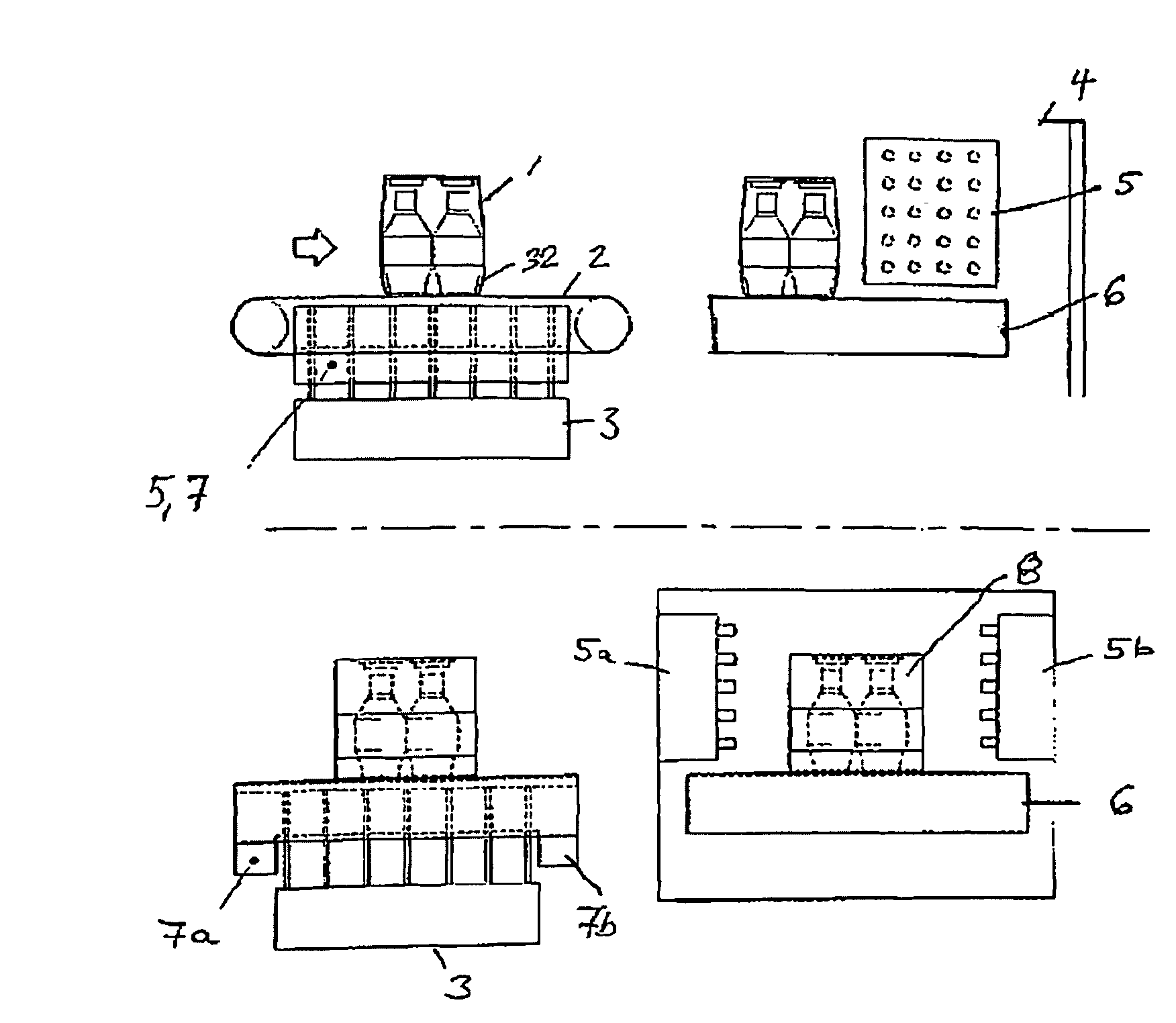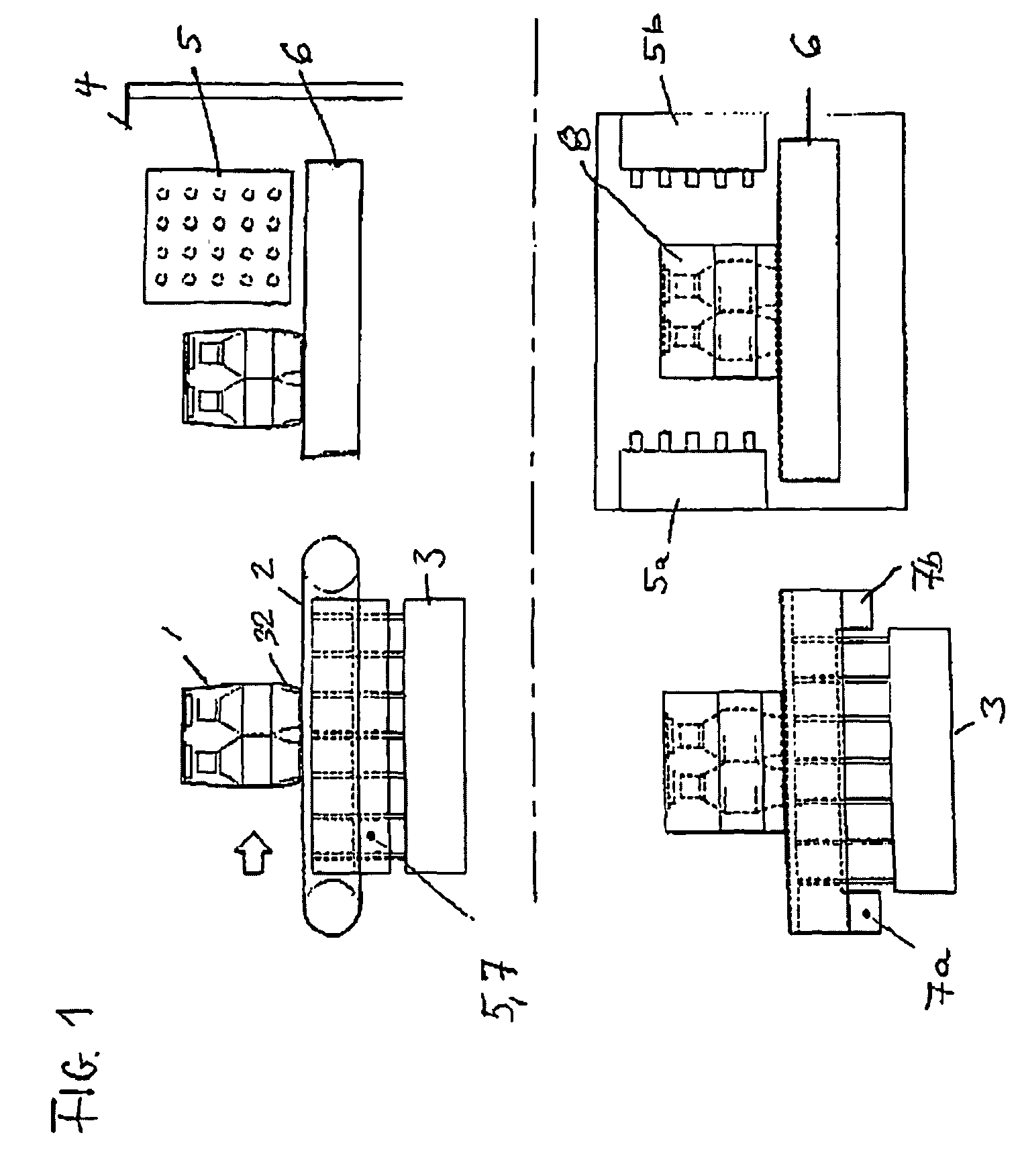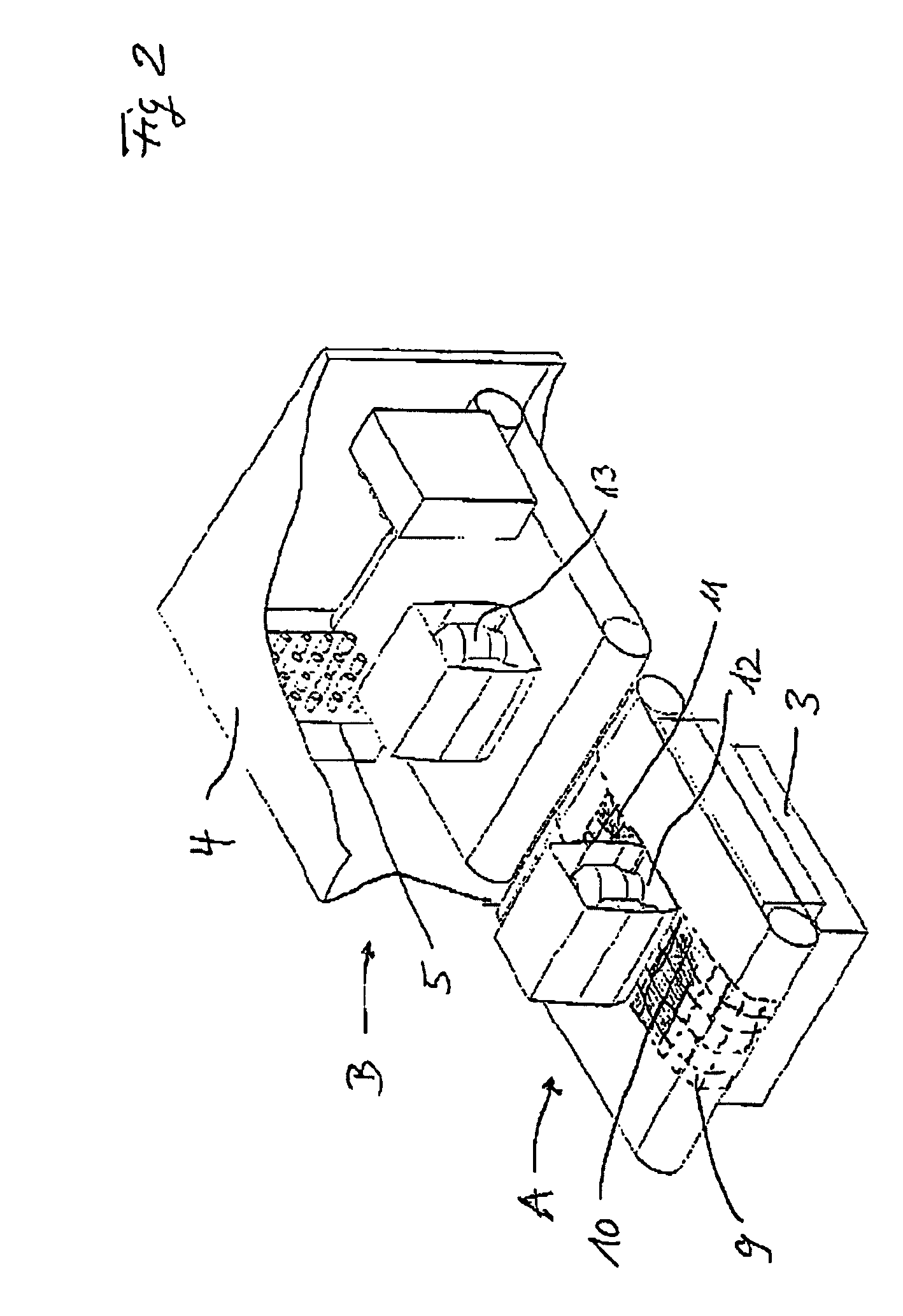Shrinking process for producing solid, transportable and printable containers and a device for carrying out a shrinking process of this type
a technology of printable containers and shrinking processes, which is applied in the direction of packaging, containers with multiple articles, wrappers, etc., can solve the problems of uneven shrinking process of wrapping films and the possibility of reducing so as to reduce the energy output to the environment and facilitate the shrinking process. , the effect of rapid container shape stabilization
- Summary
- Abstract
- Description
- Claims
- Application Information
AI Technical Summary
Benefits of technology
Problems solved by technology
Method used
Image
Examples
Embodiment Construction
[0021]The upper portion of FIG. 1 shows the device according to the invention for carrying out a shrinking process in front view. The inlet air and outlet air system 5, 7 is discernible with the container 1, which is arranged on a conveyor belt 2 over a hot air source 3. The hot air applied in reverse flow (see arrow directions in FIG. 3) serves to form a pre-stabilizing peripheral shell 32 in the base area of the container.
[0022]In the right portion of FIG. 1 the container 1 is shown in a machine that has a lateral hot air supply. The articles (bottles) of the container are conveyed via a transport belt 6 in the product travel direction through the shrink wrapping machine 4. As soon as the container 1 with the wrapping film8 arrives in front of the hot air supply 5 there is a danger that the film wrapping will be inflated by the air pressure and will be in danger of slipping thereby. This is prevented by the peripheral shell formed in advance in the area of the container base, whic...
PUM
| Property | Measurement | Unit |
|---|---|---|
| flow speeds | aaaaa | aaaaa |
| heat-sensitive | aaaaa | aaaaa |
| area | aaaaa | aaaaa |
Abstract
Description
Claims
Application Information
 Login to View More
Login to View More - R&D
- Intellectual Property
- Life Sciences
- Materials
- Tech Scout
- Unparalleled Data Quality
- Higher Quality Content
- 60% Fewer Hallucinations
Browse by: Latest US Patents, China's latest patents, Technical Efficacy Thesaurus, Application Domain, Technology Topic, Popular Technical Reports.
© 2025 PatSnap. All rights reserved.Legal|Privacy policy|Modern Slavery Act Transparency Statement|Sitemap|About US| Contact US: help@patsnap.com



